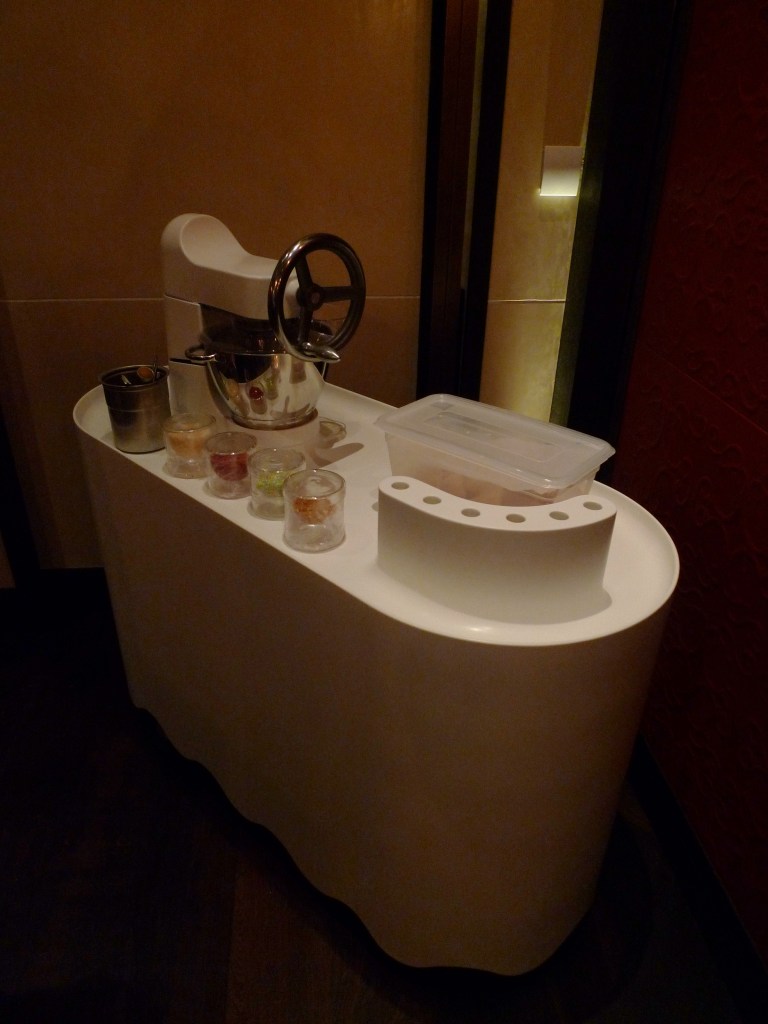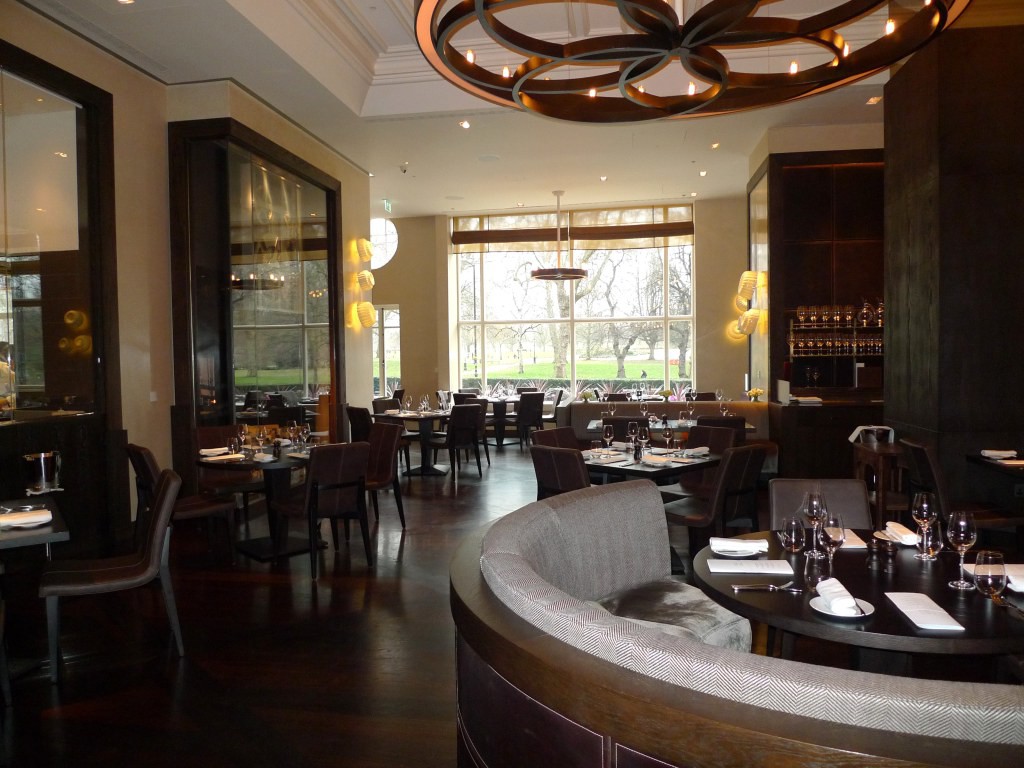
The buzz surrounding Heston Blumenthal’s first London restaurant, Dinner, which opened on the 31st of January, has been Brobdingnagian in its proportions. Early reviews from Giles Coren and Matthew Fort rhapsodised about its brilliance, and the morning that I visit The Sun has published an article by Alex James that calls the food at Dinner “the best I’ve ever seen”. I never thought the day would come when I’d read the former-bassist of Blur writing about a three-Michelin starred chef in The Sun, but there you go. It has an estimated readership of eight million.
That same day there’s also a piece in the G2 by the Guardian’s historian Tristram Hunt, that sets the restaurant’s food within its historical context. These glowing but disparate reviews seem to reflect the fundamental USP that makes Blumenthal so appealing – his aptitude for embracing both the dizzy-heights of gastronomy and the more humble national food institutions like Little Chef and hospital fare.

The day that I visit, I meet him at the chef’s table, opposite the pass where Dinner head chef and long-term culinary co-conspirator Ashley Palmer-Watts is overseeing the proceedings. Despite accommodating a veritable media frenzy during the not-exactly-relaxing experience of opening a restaurant, Blumenthal manages to retain his sense of humour, relaying an anecdote that sums up the somewhat ludicrous predicament of the modern-day celebrity chef.
“I was here doing an interview with a journalist the other day,” he says, referring to the chef’s table, which is enclosed by mirrored panelling. “And I was keeping an eye on the service through the mirrors. At one point I called Ashley over to query something and the journalist was like, ‘how did you know that?’. I told her I’d been watching the pass during our conversation and she said, ‘oh good! I just thought you’d become really conceited and obsessed with your own reflection.'”
But this is no vanity project – and Blumenthal has been intentionally vocal about Palmer-Watts’ role in the development of the restaurant, insisting that he share the limelight throughout promoting the opening. Palmer-Watts clearly shares Blumenthal’s vision and enthusiasm, beckoning me over to the pass and asking me what I’m going to order so that he can feed me tasters of dishes I won’t be trying. I sip a thin, impossibly intense broth of lamb, which on the plate is diluted by the runny yolk of a slow-cooked egg, and a spoonful of piquant cockle ketchup, which immediately jolts my memory back to the pickled cockles of my childhood. I’m overwhelmed by the flavour of both.

Dinner is the sort of restaurant that sets my heart racing a little bit. The room is visually stunning – spacious and light, with huge windows overlooking Hyde Park – through which we see the horse guards proceeding past – and two incredible Medieval-style black chandeliers dominating the ceiling. Beneath a gargantuan clock mechanism on the glass box open kitchen’s wall that controls the rotisserie inside, pineapples roast on spits in front of flickering flames from the open gas fire. This is a space for enjoyment – it’s history-meets-modernity in a thrillingly sexy synergy, and diners can’t fail to be dazzled by the artistry, thought and expense that has gone into this project.
And what of the food? We all know about the food concept by now – how Blumenthal and Palmer-Watts have spent months delving into the dusty archives of Britain’s food history, researching recipes that go back as far as the Middle Ages and using them to inspire their modern and technically brilliant cooking. Each dish therefore has a circa date, and the back of the menu cites the documents from which this inspiration is drawn, with the friendly, well-versed waiting staff on-hand to share their knowledge too.

I start with a plate of ‘hay smoked mackerel’ (c.1730). Delicate, lightly-smoky, almost-translucent and impeccably fresh slivers of fish are clean-tasting and joyful. A creamy, deep and umami-packed slick of gentleman’s relish adds moisture and another layer of flavour, with the citric astringency of the lemon salad rounding the dish off nicely.

Next comes ‘rice & flesh’ (c. 1390), which is based on a recipe from what is believed to be the earliest cookbook written by ‘the Master-Cooks of King Richard II’, a scroll called ‘The Forme of Cury’. It’s a rich and beautiful risotto, sharp and heady with saffron and dotted with the tastiest little nuggets of calf tail, which fall apart in the mouth. The calf tail is crisp on the outside, but shot-through with unctuous gelatine and topped with fresh, earthy micro cress.

I smell the ‘beef royale’ (c.1720) before the waiter puts it down. The dark hunk of meat has been slow-cooked for 72 hours and has a delicious depth to it, as well as a profoundly savoury smokiness that is heightened by the smoked anchovy and onion puree. Tiny jewels of ox tongue add yet more layers of meaty flavour, while soft, caramelised shallots and melting carrots offset with a lift of sweetness.
Pudding is ‘tipsy cake’ (c.1810) – the dish that features the alluring spit-roasted pineapple – soft, warm, fruity-sweet and slightly acidic which comes alongside some impossibly light and buttery brioche served in a cast-iron vessel. ‘Brown bread ice cream’ (c.1830) is a cool, savoury and sour thrill for the mouth, with a crunchy biscuit base adding some sweetness.

This is expertly-executed, world-class cooking which, while hearty and hugely satisfying, has real technique behind it. Aside from the bells and whistles of the dining room, the historical context and the status of the chef, this is food that you will find yourself drooling about every time you remember it.


